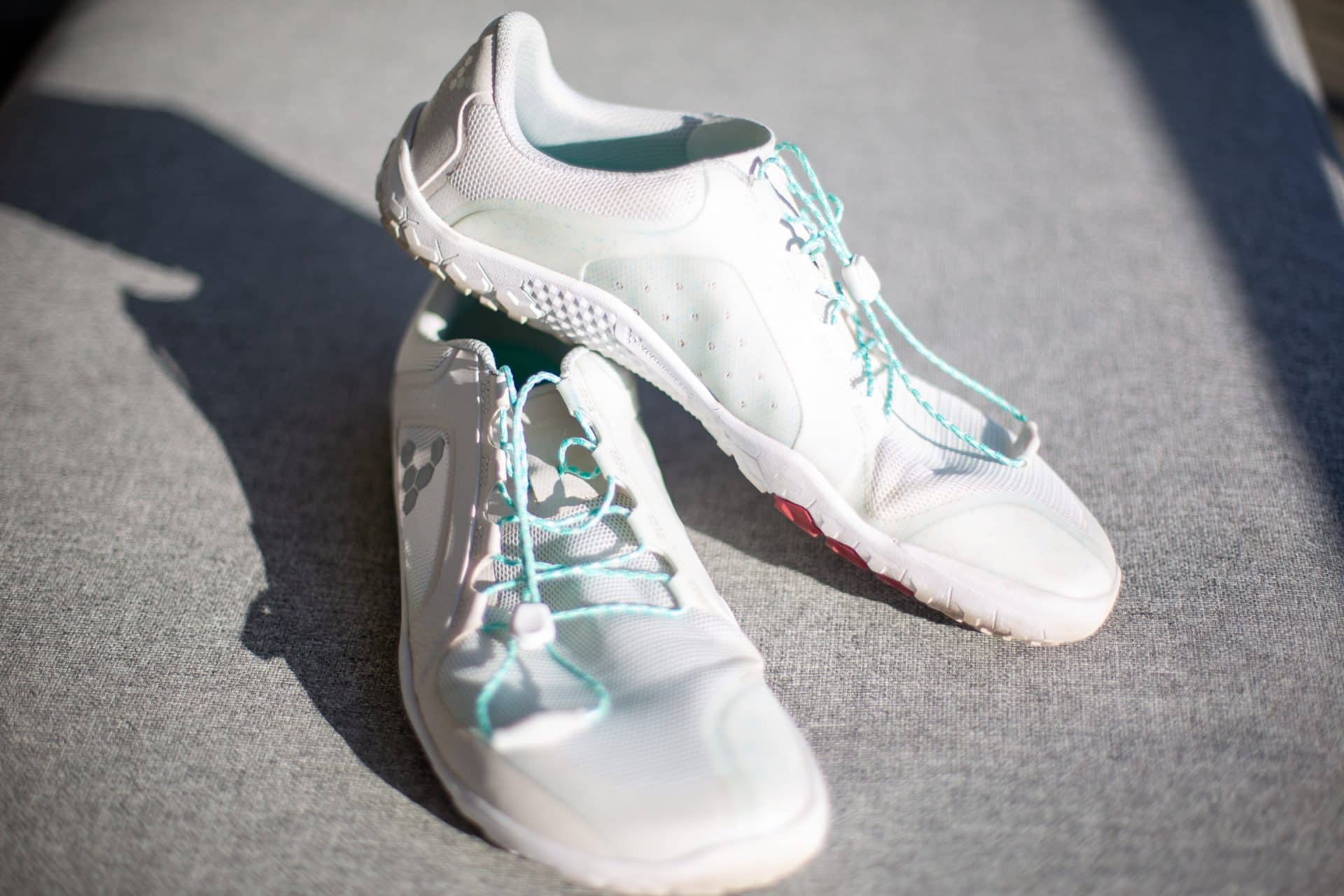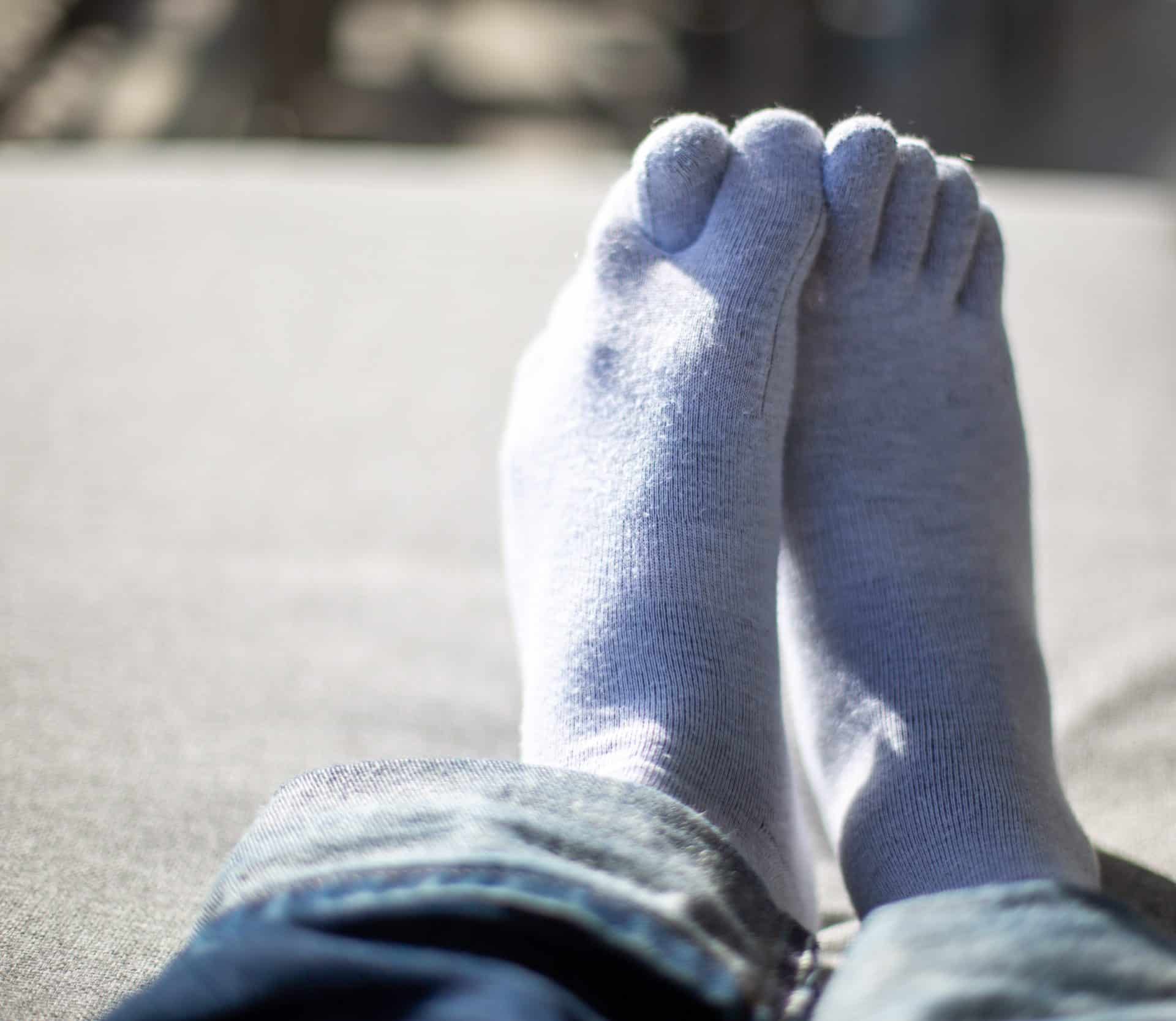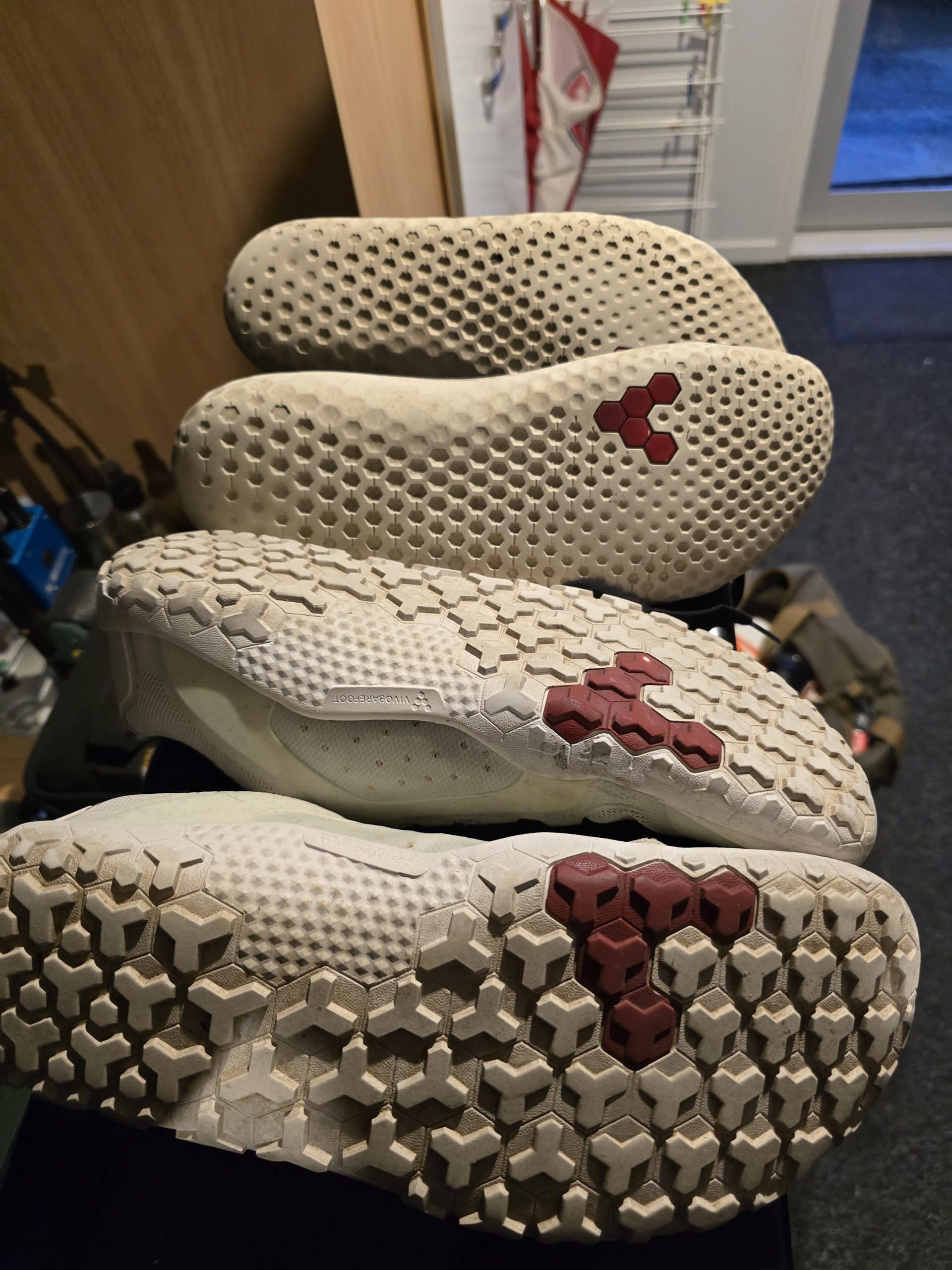Reflecting on this year, my perception of shoes has shifted. Today, I reluctantly wore traditional sneakers for a photoshoot. My toes felt cramped and sore almost immediately. Even my partner noticed my unsteady gait after a few hours, contrasting my usual grounded stride.
“I don’t know if my toes have splayed out or if I’m just more aware of pressure from narrow shoes. Regardless, I welcomed getting back into my barefoot shoes as soon as possible.”
This awareness has brought benefits. My legs have grown stronger, something even the guys at BJJ have noticed. While my feet still get cold in winter, it’s not as intense. I am more aware of my lower body, flexing and stretching while standing still.

Embracing the Barefoot Revolution: My Journey Begins
When I first discovered the concept of barefoot shoes, I was intrigued but also a bit sceptical. After years of being told how essential proper arch support and thick soles were, walking around with minimal cushioning and support seemed almost reckless. However, the more I read about the benefits of barefoot footwear—enhanced proprioception, improved foot strength, and a more natural gait—the more I felt compelled to try it.
So, in August of 2023, I switched to barefoot, minimalist shoes. I started with two pairs of Vivo’s, a brand highly recommended by various barefoot enthusiasts. Initially, I used the inserts provided with the shoes, especially during the transition phase, to give my feet time to adjust to the new experience.
At first, walking in barefoot shoes felt quite different. I was acutely aware of every pebble and texture beneath my feet, which was fascinating and slightly uncomfortable. My muscles and tendons were engaging in ways they hadn’t before, and I could feel my posture and balance slowly shifting. Despite the initial awkwardness, I quickly noticed improvements in my overall foot health. The arches of my feet began to strengthen, and the chronic foot pain I had been experiencing started to diminish.
As the months passed, I relied on the inserts less and less. My feet had adapted to the increased demands placed upon them, and I began to appreciate the natural flexibility and responsiveness that barefoot shoes encouraged. By winter, I only used the inserts when temperatures dropped significantly, and I needed the thermal protection they provided while standing on cold concrete floors.
The journey wasn’t without its challenges—there were days when my feet felt sore and tired, and it required a commitment to listen to my body and allow time for rest and recovery when needed. But as I stuck with it, I found that the benefits outweighed the initial discomfort. Not only did my feet feel stronger, but I also began to notice changes in my overall physical alignment and well-being. It became clear that transitioning to barefoot shoes was one of the best decisions for my long-term health.
Switching to barefoot shoes can benefit overall foot, toe, and leg health
Traditional Shoes: A Cramped Reality Check
Wearing those traditional sneakers was eye-opening, to say the least. I felt like my feet were trapped in stiff, narrow boxes, a stark contrast to the freedom I’ve grown accustomed to with my Vivo’s. The cramped feeling wasn’t just uncomfortable; it was almost unbearable after spending a year in minimalist footwear. I frequently adjusted my feet, trying to wiggle my toes to reclaim some semblance of space and balance. It reminded me of when I thought tight, structured shoes were the norm, but now, they just seem archaic.
What struck me most was the disconnection from the ground beneath me. Traditional shoes, with their thick soles and cushioned insides, create a barrier that dulls sensory feedback from the feet. This lack of ground feel affected my balance significantly. My partner even noticed my gait was off, less stable and more forced compared to my usual natural stride in barefoot shoes. It’s fascinating how quickly our bodies can adapt to and appreciate the benefits of more natural footwear, to the point where anything else feels unnatural and even detrimental.
Reflecting on this experience, I realise how much my perception and awareness of footwear have shifted. My toes have likely splayed out more, and I’m certainly more conscious of any constriction or pressure that traditional shoes impose. The difference is palpable, reinforcing my commitment to wearing barefoot shoes for the long haul. After all, once you’ve tasted freedom, there’s no turning back.

Leg Strength Gains: A Year of Subtle Training
Besides my regular weight training regime that includes split squats and other leg-focused exercises, I have noticed distinct changes in my musculature that seem directly linked to wearing barefoot shoes. My calves, in particular, feel firmer and more engaged during daily activities, giving me a sense of newfound stability.
Interestingly, this hasn’t gone unnoticed. Some of my BJJ training partners have commented on my enhanced leg strength and balance—a factor I attribute partially to my footwear. The nature of barefoot shoes insists that every step requires more effort from your lower body, subtly intensifying the workout without you even realising it.
This constant, low-level exercise seems to have a cumulative effect. Over time, my legs have adapted to the increased workload, resulting in stronger muscles and a more alert and responsive lower body. I’m more in tune with how I move, and perhaps most importantly, I’ve become more grounded—literally and figuratively. The journey of strengthening my legs through minimalist shoes reflects a broader process of continually working towards better health and more mindful living.
Wearing barefoot shoes can improve balance and gait

Cold Resistance: Winter in Barefoot Shoes
One unexpected perk I’ve noticed is a higher tolerance for cold weather. Previously, winter was a battle against freezing feet, but now it’s much more bearable. It isn’t that I don’t feel the cold; rather, my feet seem to have adapted to it better. I used to dread stepping outside in jandals during those biting months. Now, I can slip into them for a quick trip to BJJ without feeling like I’m walking on ice.
However, I’m pragmatic about the limits of barefoot footwear in extreme conditions. While my feet might not get as cold as they used to, I am exploring options like barefoot boots for more demanding settings. For instance, with a mid-winter hunting trip on the horizon, more protection from the elements would be welcome. I envision a sturdy pair with thermal inserts providing the needed warmth while allowing the natural foot movement I’ve come to enjoy.
It’s fascinating how these shoes have made me more attuned to my body, especially how it responds to different climates and terrains. The feeling of connectedness to the ground, even in colder conditions, has its own charm and utility. I’m more active in keeping my feet warm through movement, and this conscious engagement has been surprisingly beneficial. While I’m prepared to adapt further, the essence of barefoot shoes—enhancing my natural stride and responsiveness—has made the winter months less daunting.
Feet may become more resilient to cold temperatures with regular barefoot shoe use

Durability
The Vivo Primus Trail II FG is on the bottom, and the Geo Court III is on the top. The slightly harder FG sole shoes have minimal wear (maybe a little over the toe ‘tip’), while the softer sole on the Court is showing a bit more. Remember that this is a year of just wearing the two different pairs. By their nature, we are talking softer material than many other shoes – harder and they couldn’t be as flexible.
Why I Love Barefoot Shoes: A Year in Review
One of the most profound transformations I’ve experienced is a heightened awareness of my feet. With each step, feeling the ground beneath me has brought me closer to my body, enhancing my overall connection to every movement I make. It’s not just about wearing shoes; it’s a lifestyle change that emphasises the simplicity and elegance of natural movement.
The benefits have extended beyond my feet and legs. I’ve noticed improvements in my posture and balance, two aspects of physical health that had often been neglected. Walking and standing now feel like activities that actively engage my entire body, subtly working muscles that traditional footwear left dormant. The shift towards minimalist shoes has added a new dimension to my physical activities, whether everyday walking or attending BJJ sessions. My body feels more liberated, and an undeniable sense of freedom comes with each step.
That said, the journey hasn’t been without its challenges. Adapting to barefoot shoes required time, patience, and a willingness to embrace initial discomfort. There were moments of significant strain, especially during the first few months. However, recognising that these moments were steps towards a stronger, more resilient body kept me committed. The reward has been well worth the effort—a year in, I feel more dynamic and grounded than ever.
Looking ahead, I’m excited about further exploring the world of barefoot footwear. The idea of trying out barefoot boots has piqued my interest, especially with a mid-winter hunting trip on the horizon. The combination of minimalism and the need for practical protection in rugged terrain presents an intriguing challenge. Finding the right balance will be essential, but I am confident in the benefits that barefoot shoes have already proven to provide.
As I reflect on this past year, one thing is clear: switching to barefoot shoes has been one of the best decisions for my physical health. I encourage anyone curious about minimalist footwear to take the plunge. The journey might start with discomfort, but it leads to a more intimate connection with your body and a profound sense of well-being.



